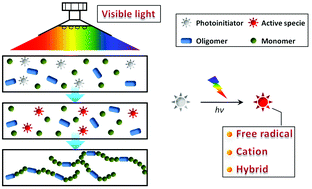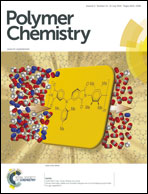Visible light initiating systems for photopolymerization: status, development and challenges
Abstract
Free radical and cationic photopolymerization reactions have been greatly utilized in various conventional and emerging applications, such as coatings, electronic circuits, digital storage and 3D precision machining. Compared with ultraviolet light induced photopolymerization, visible light induced photopolymerization presents significant advantages in irradiation safety, curing depth and equipment cost. In this paper, the advancement in visible light induced initiating systems using free radical, cationic and hybrid photoinitiators is reviewed. Chemical structures of the photoinitiators or photosensitizers, photochemical reactivity of photoinitiating systems, and initiating mechanisms of these photoinitiating systems with different activation modes are introduced. The characteristics and limitations of some visible light initiating systems are compared and discussed in terms of the initiating efficiency, excitation wavelength, material cost and safety. The recent promising development of free radical and cationic hybrid initiating systems is also highlighted with their complementary properties in initiating performance and mechanical properties of the cured products.


 Please wait while we load your content...
Please wait while we load your content...